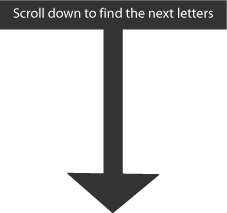Copyright © University of Cambridge. All rights reserved.
'Shapes in the Alphabet' printed from https://nrich.maths.org/
Show menu
Why do this problem?
This problem uses a familar resource, the capital letters of the alphabet, in an unusual way. This enables learners to work with interesting shapes which are non-threatening and easy to talk about. The problem encourages children to make hypotheses and give reasons for their suggestions, then alter their
hypothesis based on new information.
Possible approach
Before starting this activity, it would be good to talk with the group about the shapes of different capital letters. Perhaps one child could describe a particular letter for their partner to guess which one it is. In this way, the class will begin to develop a shared language which might include words such as lines, straight, curved, horizontal, vertical. Learners might need help describing
the enclosed area that some shapes make.
The two challenges could be displayed on the interactive whiteboard (or screen), so that to start with, each pair makes a hypothesis based on the first two letters. These initial ideas could be shared, focusing on reasons for them. Of course at this stage, a number of conclusions could be drawn. As you scroll down to the next part, ask pupils to consider altering their hypotheses and
continue in this way. Again, it is the reasons for changing their minds (or not!) that are useful to emphasise. This sheet of letter shapes could be photocopied for class use or alternatively, learners could work in pairs at a computer.
Key questions
What is the same about these two letters?
What is the same about the letters in this set now?
Which other letters could go with them?
Possible extension
Children could make their own versions of this problem by finding other sets of letters that go together and then challenging a friend to find the set when a few are given at a time.
Possible support
It might help some learners to have each letter on a separate piece of paper or card so that they could be physically moved around and therefore compared more easily with each other.






